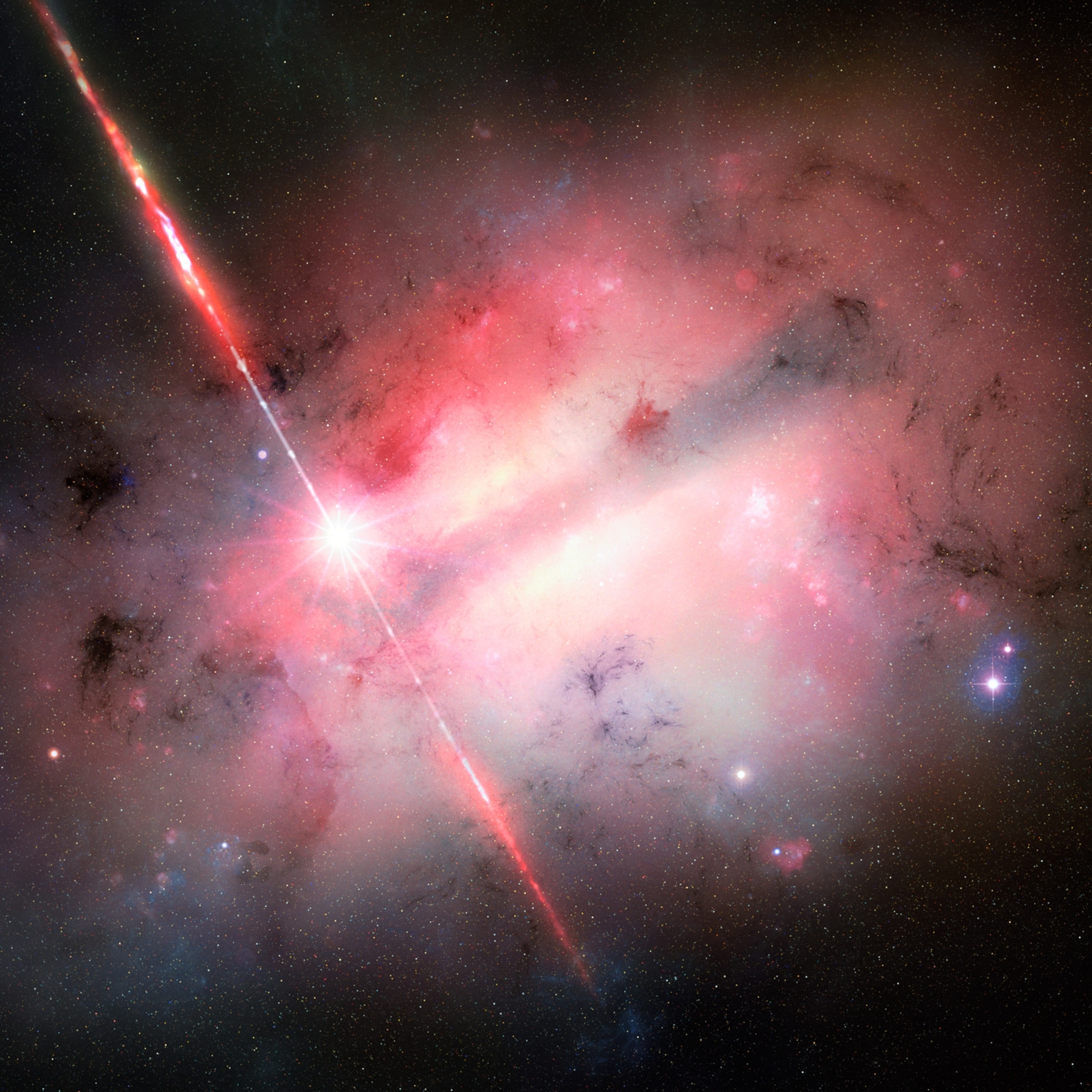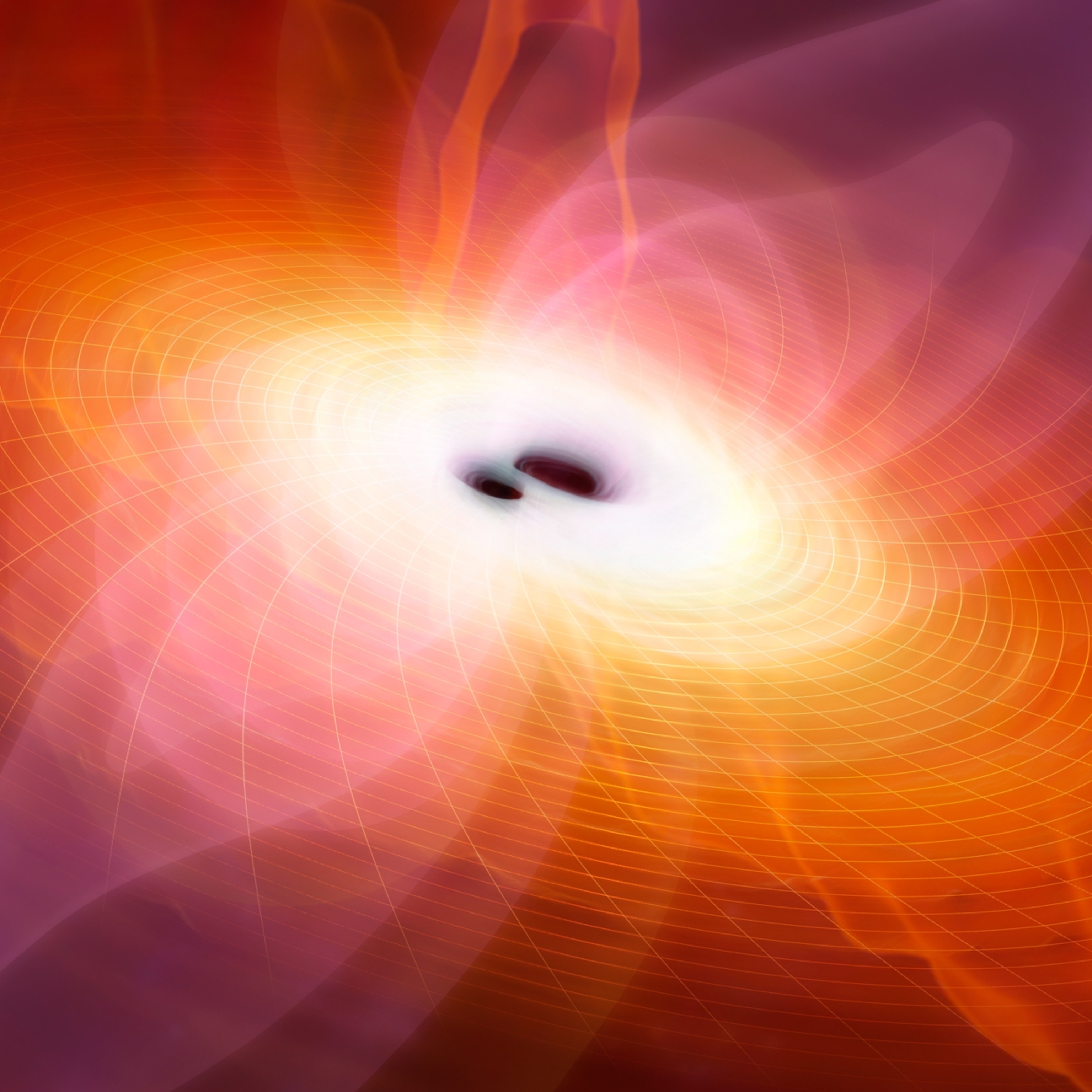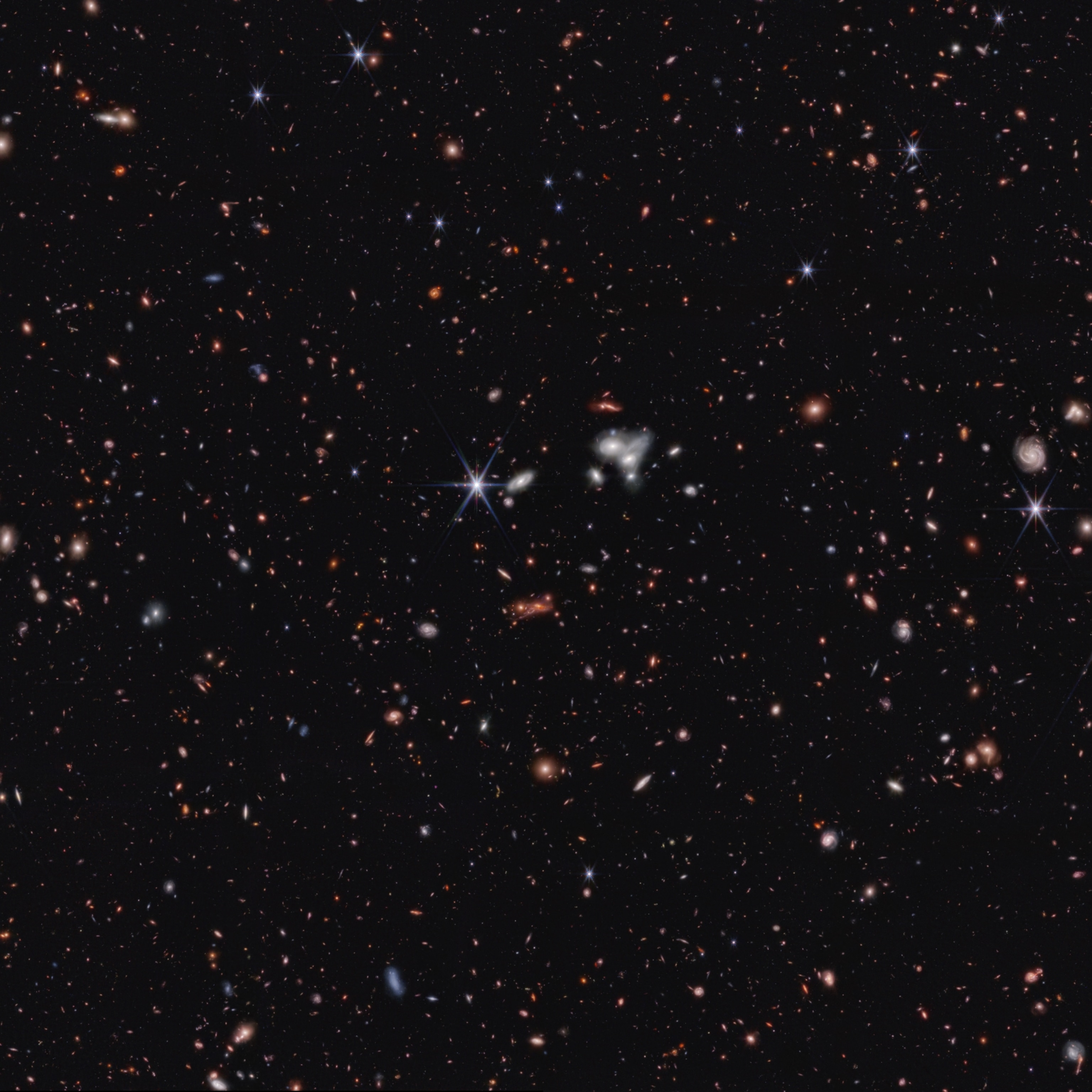
Astronomers may have finally seen a star become a black hole
“This is the target we've been waiting for for years,” says one astrophysicist.
As dinosaurs stomped across ancient Earth more than 200 million years ago, a massive star was entering its death throes. The resulting cosmic explosion was so unusual, it left astronomers scratching their heads when its glow at last reached our planet last June.
Now, the mysterious flash may have an origin story. Based on the latest observations of the strange supernova, nicknamed the Cow, a team of 45 astronomers argues that it may represent the first time humans have captured the exact moment a dying star gave birth to a black hole.
“This is the target we've been waiting for for years,” says team leader Raffaella Margutti, an astrophysicist at Northwestern University. Margutti and her colleagues presented their work this week at the American Astronomical Society's annual meeting in Seattle, Washington, and will soon be publishing their findings in the Astrophysical Journal.
The team's data, captured in multiple wavelengths of light, could also mean that a massive star collapsed into a neutron star, a kind of dense stellar corpse. And other teams studying the Cow have proposed alternative explanations for its unusual behavior. So what do we know about the Cow, and why has it been so hard for astronomers to describe? We've got you covered.
Where is the Cow, and why is it called that?
The Cow exploded in the outskirts of CGCG 137-068, a dwarf spiral galaxy about 200 million light-years from Earth. It's called “the Cow” because of its formal, auto-generated name AT2018cow. A team of astronomers using Hawaii's ATLAS telescopes saw it on June 16, 2018, and flagged the object to other astronomers on June 17—triggering a rush of telescopes turning to point at the explosion.

What makes the Cow so unusual?
The Cow isn't the first flash of its kind spotted in the night sky, but it is the closest one ever detected, giving researchers an unprecedented chance to see one in detail. It also got really bright, really fast. At the Cow's peak, it was tens of times more luminous in x-rays than normal stellar explosions, which are called supernovae. The Cow hit its peak brightness in just a few days, while it takes regular supernovae weeks to fully ramp up.
What's more, the Cow's power source wasn't immediately obvious. Normally, supernovae get their explosive oomph from nickel-56, a radioactive isotope stuffed in their innards. But when astronomers calculated how much debris the Cow had thrown off, they came up with a surprisingly low amount of total ejected debris—maybe a tenth of our sun's mass, if that. That's weird, because supernovae normally eject tens of suns' worth of debris.
Related: Stunning Pictures of Supernovae
Even if the Cow's debris were entirely nickel-56, that wouldn't be enough fuel to power the observed explosion. What's more, the debris contained hydrogen and helium, which astronomers weren't expecting to find: The stars that explode into supernovae should have long since burned through those elements as nuclear fuel.
The Cow also gave off radiation in unusual ways. For instance, Margutti's team asked to point NASA's NuSTAR x-ray telescope at the object. The data showed that a little over a week after it first appeared, the Cow unexpectedly grew a lot brighter in high-energy x-rays. “The first reaction when we got the data was, perhaps we did something wrong,” Margutti says.
Do we know what caused the Cow?
The current consensus is that a compact “central engine” sits at the Cow's center and spews those high-energy x-rays. This object, whatever it is, is shrouded in a distinctly asymmetrical blob of material thrown off in some kind of explosion.
“One of the jokes is that we [physicists] always model things as spherical cows, and it was clear that this was an aspherical cow,” says study coauthor Brian Metzger, a physicist at Columbia University. “It's really hard to explain this as a spherical event, because if the x-ray source is powering the optical radiation, then how are the x-rays getting out to us?”
One of the jokes is that we [physicists] always model things as spherical cows, and it was clear that this was an aspherical cow.Brian Metzger, Columbia University
In the model made by Margutti's team, the debris flying from the object's poles moves faster—and gets transparent sooner—than the clouds around the object's equator. These equatorial clouds absorbed the engine's high-energy x-rays, which made the clouds heat up and generate the Cow's visible light. But some of the high-energy x-rays could still leak out from the Cow's clearer poles.
Meanwhile, the Cow's radio signals show that it behaved like a bull in a foggy china shop. When the Cow exploded, some of the debris from the object zoomed outward at more than 18,000 miles a second, or up to a tenth of the speed of light. The fastest of this material seems to have slammed into a dense haze of particles surrounding the Cow, heating up the haze and creating the object's radio emissions.
So what is the Cow's “central engine”?
Margutti's team thinks there are two leading options. The Cow could be a highly magnetized neutron star rotating about a thousand times a second. The other possibility is that the object appeared when a huge and very hot type of star called a blue supergiant had a misfired explosion and became a black hole.
In this scenario, most of the star's interior collapsed to form the black hole, but the star's outermost layers didn't feel it at first. As the inner black hole revved up, it lost some mass in the form of a swarm of ghostly particles called neutrinos. The neutrinos' flight out of the star's center ejected some of the outer material before the black hole could gobble it up, and the leftovers soon accreted into a disk around the newborn black hole.
Are there other ideas for what the Cow might be?
Margutti and her colleagues aren't the only ones proposing that the Cow has a central engine. In another study accepted to the Astrophysical Journal, a separate team led by Caltech astronomer Anna Y. Q. Ho reaches similar conclusions.
But Daniel Perley, an astrophysicist at Liverpool John Moores University, suggests in his own study that the Cow may have appeared when an already existing and relatively massive black hole ate a star similar to our sun, in an event known as a tidal disruption. As the black hole's immense gravity ripped the star apart, its gases could have accreted around the black hole in a disk, creating the Cow's unusual glow in the process.
The question is whether it makes sense for a black hole of that size to be hanging out in the outskirts of a galaxy, in an area that should be dense with gas according to the Cow's radio signals. Current theory holds that black holes of that caliber should form in star clusters, where there's not a lot of extra gas.
Margutti argues that the Cow's environment makes a lot more sense if the fog surrounding it was material thrown off by a huge star, one that could later collapse into a neutron star or black hole. But Perley points out that we haven't yet found and studied any black holes in the mass range his team invokes, so we can't be sure that theory matches reality.
“[Margutti's] team is composed of some really top-tier supernova experts, but I'd like to see the tidal-disruption experts weigh in, to see if they can find a way to make it work,” Perley says.
What's next?
Longer-term observations of the Cow could help tease out the identity of its central engine. If a magnetized neutron star lies at the Cow's heart, Metzger says, it could send out x-ray flares years from now. A black hole, however, wouldn't flicker in this way.
But the most fruitful way to learn more about the Cow is to find more objects like it. Astronomers only recently gained the ability to spot such flashes of light and follow up on them in real time, as more robotic telescopes and large-scale surveys have come online.
“These surveys of the night sky are almost taking movies ... It's an exciting time,” Metzger says. “We're not just seeing the universe as a static thing, but something that can be every active, even on timescales of a few days.”












